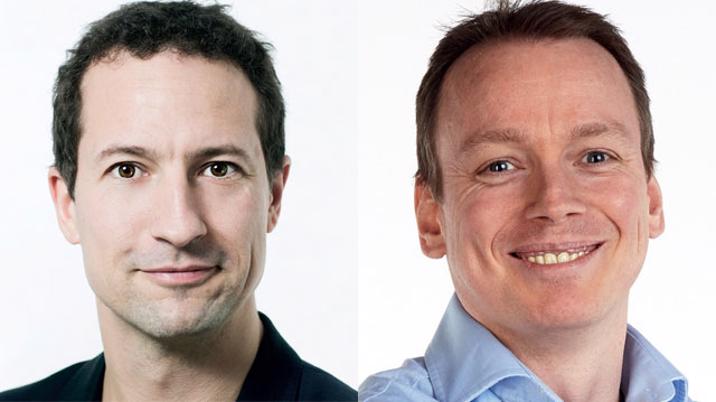
Native advertising has enjoyed a steep growth trajectory in 2016 and all the indicators suggest it will continue apace as it becomes a dominant form of advertising in the future, perhaps even the most dominant form. Driven by an antipathy towards traditional display advertising, particularly online, is native the solution for brands to really engage and build sustainable relationships with consumers more effectively than through the direct sales messaging of a typical display ad?
Condé Nast have recently revealed that native accounts for half their digital advertising revenues and for some publishers, it’s even higher. It’s fair to say that a tipping point has been reached for a number of publishers and native advertising is the new norm.
It certainly feels like it’s time to acknowledge the interests of the consumer better, the poor tired individual who is receiving more sales messages than they can reasonably cope with in a typical day, and doubting the authenticity or value of certain direct messaging perhaps more than ever before. Online, the invitation to ‘click here’ has never been more prominent, and yet consumers are wiser to the outcome of doing just that, and being taken away from the environment they’re enjoying consuming content in at that moment.
In any medium, we know that consumers are more likely to engage with something that lights their interest and fits with their expectation of content delivered by that media brand.
In that sense, native advertising, done well, clearly offers a huge opportunity as it seeks to extend the interest a person has in a topic and provide interest and entertainment in delivering information which they will engage with and react to in a more considered way. It’s less forced; less “do something now” and more about tapping into the psyche and sowing the seeds of interest and creating desire for an action to come.
It’s advertising, but follows a different principle – one that assumes the customer is worth building a deeper relationship with, and seeks to engage them in a dialogue about the subject they’re interested in with the party who is seeking to connect with that consumer.
There’s a really important aspect to good native advertising, and something that is vital in creating the credibility of the message delivered, and that is the role of publishers and media brands in conveying the message to their audiences. Any brand can communicate with its audience through its transactional database or social media profile but it’s the value added by media brands with their audiences or communities who look to that brand for direction, inspiration and approval, which is why the power of native advertising can be so strong in engaging positive sentiment amongst consumers.
In 2016, two pieces of research conducted by the Native Advertising Institute among news and magazine publishers showed that around one in three publishers now have their own native advertising studios.
The challenges for 2017 and beyond
There are at least six key challenges for native advertising in 2017: * innovation - the creation of good content * collaboration and integration with editorial teams * reach and targeting * focus on strategic storytelling * making content short, visual and sharable * measurement.
The biggest challenge for brands, publishers and agencies is creating good content, finding the fresh and engaging ideas to really engage audiences. As much as native advertising is an antidote to traditional display, it can only work if it creates interest and draws an audience in.
That’s something media owners have in abundance; they live off content, they’ve built reputations and audiences on their quality of coverage of topics.
This raises the question of integrity between editorial content and commercial presentation of content. The industry has self-regulated pretty well, adopting clear labelling of commercial content for the most part, enabling consumers to distinguish between core content and that from a “sponsor”. If done well, in the style of the media brand and relevant to the normal reading experience, we generally see acceptance and interest in that content, but without that clarity, the risk of the consumer feeling duped can only create a negative outcome for both the media brand and the advertiser.
I spoke with two senior industry figures to gauge their views on the thorny subject of utilising the editorial resources of publishers in the creation of commercial content.
How involved should an editorial team be in producing native ad content?
Jesper Laursen, CEO of Native Advertising Institute says, “That is a very difficult question and it depends very much on the type of publisher. We have done extensive research on both the magazine industry and the news media industry and the magazine publishers are more willing to involve their editorial team with 68% vs 42% of the news media industry. There is no right or wrong but what is crucial is that whatever the publisher decides to do, they need to make sure their editorial content is in no way whatsoever influenced by the collaboration with brands.”
Pete Wootton, managing director (digital) at Dennis Publishing said: “As a specialist publisher, very (involved). For me, the people who know the subject matter the best and how to produce the most compelling content that will resonate with the target audience are the editorial team. Clearly this needs some controls to ensure credibility and integrity is protected, but if you get this right, you get content which is at least as good as the normal editorial output which guarantees it works for the client.”
To keep pace with changing editorial delivery, publishers need to treat native ad content equally as core editorial content, and acknowledge the changing motivations of their audience, particularly towards an appetite for visual and creative delivery of information. Native ads can’t be intrusive, they have to blend with the reading experience and provide the same level of attraction, interest and engagement.
Innovation in content
This year, we’ve seen growth in consumption of visual content particularly video content, which is predicted to overtake written content in the not-too-distant future. We’re seeing the emergence of virtual reality as a means of delivering even more engaging interaction for consumers, and whilst at a nascent stage, can expect to see rapid future growth. One could say that publishers are becoming the agencies of tomorrow as they become increasingly creative in delivering content to audiences.
I asked our two experts what innovation they think will have the biggest impact on native ad growth?
Jesper Laursen: “In the short run, I actually think it will be all the studios that publishers are establishing. They are rapidly becoming a game changer in the ecosystem of brands, agencies and publishers and in the next two to three years, they will make it more and more difficult for traditional media buying agencies and advertising agencies.”
Pete Wootton: “Having the editorial team very involved. As native content is taken more seriously, it will become a more central part of a normal editorial team’s output IMHO. It will be seen as part of their job and they won't largely distinguish between a 'paid-for' and 'non paid-for' piece of content.”
Reach and platforms
One thing is for sure, and that is publishers often cannot deliver the ultimate reach that advertisers crave on their own. Delivering reach may be considered as important as the actual production; after all, success depends on getting your message in front of the right consumers wherever they are, and that increasingly means engaging with them on platforms other than the media brand.
So, what is the importance of platforms such as Facebook in adding value to media brands’ native output?
Jesper Laursen: “That relationship is a little tricky as those platforms are both a partner and a competitor for publishers. Things are changing so fast that it is hard to make recommendations. Publishers should explore the options that are presented to them and there are many great ones at the moment. And then at the same time, they need to remember that it is always a risk building anything on rented land and that social media like Facebook are here to make money – even if that means making money off of their partners.”
Pete Wootton: “Obviously, social amplification is important for native campaigns. But for us, the primary distribution point will continue to be our own domains because we have spent so much time and money building highly targeted and responsive audiences in key vertical markets.”
Making content that is short, visual and sharable is a mantra we’ll increasingly hear as the attention spans of audiences continue to shrink, the competition for attention increases and messaging continues to saturate consumers on a daily basis. Sharing of content is an indicator of interest, and recommendation by friends or family remains a strong endorsement of belief, as word of mouth recommendation has always been a key driver of consumer behaviour.
The final big issue is that of measurement. There is no silver bullet for success here but the goal has to be to ensure that there is effective interaction, engagement and action. Traditional measures may be too simplistic, pure click-through rates do not indicate the value of the consumer and can be misleading in under-reporting the true level of engagement and action amongst audiences.
Ultimately, the role of native advertising may be summarised as strategic storytelling that drives top of the funnel activity. Whilst native can, and does, have an impact throughout the traditional sales funnel, to rely on pure conversion metrics is missing the trick of what native essentially sets out to do, which is deliver longer term brand building value. For publishers, this is really important in building sustainable renewable business as reports have shown that the biggest influencer on renewals is actually client experience.
All told, we can expect to see the growth trajectory for native continuing throughout 2017 and beyond. The reports from Native Advertising Institute with FIPP on behalf of magazine publishers, and INMA on behalf of news publishers, suggested that by 2018, we will see native accounting for 33% of magazine revenues and 25% of news revenues.










